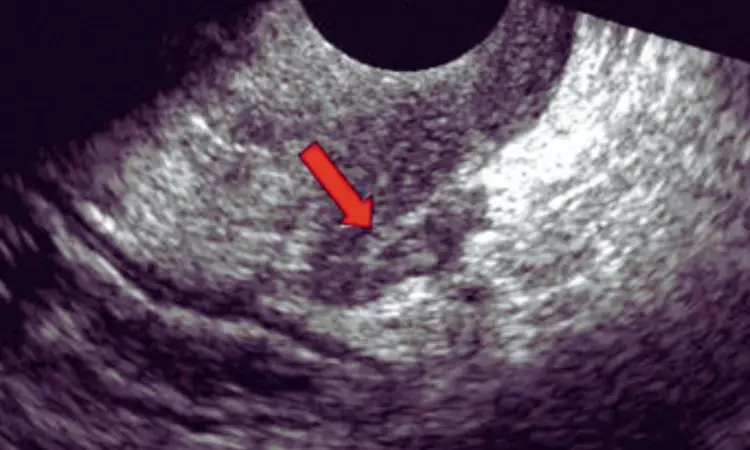- Home
- Medical news & Guidelines
- Anesthesiology
- Cardiology and CTVS
- Critical Care
- Dentistry
- Dermatology
- Diabetes and Endocrinology
- ENT
- Gastroenterology
- Medicine
- Nephrology
- Neurology
- Obstretics-Gynaecology
- Oncology
- Ophthalmology
- Orthopaedics
- Pediatrics-Neonatology
- Psychiatry
- Pulmonology
- Radiology
- Surgery
- Urology
- Laboratory Medicine
- Diet
- Nursing
- Paramedical
- Physiotherapy
- Health news
- Fact Check
- Bone Health Fact Check
- Brain Health Fact Check
- Cancer Related Fact Check
- Child Care Fact Check
- Dental and oral health fact check
- Diabetes and metabolic health fact check
- Diet and Nutrition Fact Check
- Eye and ENT Care Fact Check
- Fitness fact check
- Gut health fact check
- Heart health fact check
- Kidney health fact check
- Medical education fact check
- Men's health fact check
- Respiratory fact check
- Skin and hair care fact check
- Vaccine and Immunization fact check
- Women's health fact check
- AYUSH
- State News
- Andaman and Nicobar Islands
- Andhra Pradesh
- Arunachal Pradesh
- Assam
- Bihar
- Chandigarh
- Chattisgarh
- Dadra and Nagar Haveli
- Daman and Diu
- Delhi
- Goa
- Gujarat
- Haryana
- Himachal Pradesh
- Jammu & Kashmir
- Jharkhand
- Karnataka
- Kerala
- Ladakh
- Lakshadweep
- Madhya Pradesh
- Maharashtra
- Manipur
- Meghalaya
- Mizoram
- Nagaland
- Odisha
- Puducherry
- Punjab
- Rajasthan
- Sikkim
- Tamil Nadu
- Telangana
- Tripura
- Uttar Pradesh
- Uttrakhand
- West Bengal
- Medical Education
- Industry
Dedicated Ultrasound and MRI Protocols Prove More Effective for Diagnosing Pelvic Endometriosis, Study Finds

USA: Researchers have reported that dedicated ultrasound and MRI protocols are more effective in diagnosing endometriosis than routine methods. The study, published in the American Journal of Roentgenology, revealed that this advancement could significantly enhance patient care.
Endometriosis is a prevalent and debilitating condition where imaging is crucial for accurate diagnosis and effective treatment planning. Both ultrasound (US) and MRI are commonly utilized to detect this disease. To determine if one method is more effective than the other, Angela Tong, NYU Grossman School of Medicine, New York, NY, and colleagues conducted a comprehensive literature review.
Out of 4,482 studies identified in the initial search, 33 were selected to evaluate the effectiveness of ultrasound (US) and MRI in detecting pelvic endometriosis. The majority of these studies were conducted at specialized centers with significant expertise in endometriosis, employing dedicated US and MRI protocols. Specifically, the dedicated ultrasound protocol employed transvaginal ultrasound with a mid to high-frequency transducer, which provided enhanced spatial resolution.
The following were the key findings of the study:
- A wide range of sensitivities and specificities was reported, but overall weighted means of diagnostic statistics between US and MRI were similar.
- The choice of dedicated US versus MRI in the evaluation of endometriosis should, therefore, be based on the expertise in the region.
- The data also showed ultrasound had better accuracy to identify the depth of wall invasion in bowel wall disease, whereas MRI better visualized pelvic wall and extraperitoneal disease.
- When analyzing all the studies included in the review, the group found that the weighted mean sensitivity for detecting endometriomas was 81% for ultrasound and 67.8% for MRI. Additionally, the weighted mean specificity was 84.4% for ultrasound and 83.2% for MRI.
The findings showed that routine ultrasound and MRI protocols were found to be less effective than specialized protocols, which could contribute to delays in diagnosis. Enhancing the sensitivity of routine imaging methods for detecting deep endometriosis may improve patient access to timely and appropriate care.
The key takeaway? Clinicians should select the appropriate diagnostic modality for endometriosis based on available expertise and maintain close collaboration with their gynecology colleagues, according to Dr. Angela Tong's team.
The researchers concluded that if both MRI and ultrasound are available, starting with MRI could offer a more comprehensive evaluation of the extent of both intraperitoneal and extraperitoneal disease. Subsequent dedicated ultrasound can then be used to further investigate specific areas and aid in detailed treatment planning. Consistent communication between radiology and gynecology professionals is essential to ensure the best patient care.
Reference:
Tong A, Cope AG, Waters TL, McDonald JS, VanBuren W. Best Practices: Ultrasound Versus MRI in the Assessment of Pelvic Endometriosis. AJR 2024 Sep 11 [published online]. Accepted manuscript. doi:10.2214/AJR.24.31085
Dr Kamal Kant Kohli-MBBS, DTCD- a chest specialist with more than 30 years of practice and a flair for writing clinical articles, Dr Kamal Kant Kohli joined Medical Dialogues as a Chief Editor of Medical News. Besides writing articles, as an editor, he proofreads and verifies all the medical content published on Medical Dialogues including those coming from journals, studies,medical conferences,guidelines etc. Email: drkohli@medicaldialogues.in. Contact no. 011-43720751


